Camel milk tea: On the ground with the Fakirani Jats.
Nomadic pastoralism, horizontal transhumance, and the ecology of the Banni grasslands.
This is part one of two about my time with the Fakirani Jats in Kutch, India. It describes their camel pastoralist lifestyle, how they milk, and my initial impressions. The second piece gets into the darker side of what I’m seeing here, and the emotional/ethical complications of visiting groups like this.

It didn’t seem real. I slipped in and out of sleep, lying on a wool blanket, under a dome of milky stars. Women in embroidered shawls sat around campfires, their ornate silver nose piercing and many tiers of bracelets reflecting the low flickering light. Song-like murmurs of people speaking a language I’ll never understand, while camels groan like hungry bears from a distance. In the cold starlit night I woke to hear foxes, jackals, and hyenas, unsure who is making what sounds.
I felt incredible on this second night spent in the camp of this family of camel pastoralists. This is me getting back to the original Milk Trekker vision. The goal was to find humans who live closely with dairy livestock and move across unfenced landscapes, taking their herds where food grows. The vision was, and is, to walk with these herds and herders, to stay in their camps, villages, or farms. To learn by participation older methods of milking, herding, and working with livestock, transforming milk via fermentation into cheese and other foods.
The Fakirani Jats that I met are nearly fully nomadic, moving with herds of camels between coastal mangrove forests, irrigated ag fields, and the edges of the Banni Grasslands, where I caught up with them. This could be called an irregular horizontal transhumance, as yearly variations in rainfall and feed availability alter the course. Banni is home to various pastoral groups, some stay increasingly permanently, relying on imported fodder during the long dry season. Others arrive at the start of the summer monsoon, when water becomes available, and seasonal wetlands and grasslands reappear. It was on the shores of a vast, shallow lake that I found the Fakirani Jats. After spending the summer in coastal mangrove forests, the Jats return to this lake on the edge of Banni once the monsoon is over. The lake slowly turns from sweet to salty as it dries up. Once it is too salty for the camels to drink, the Jats move on. This year that will happen around Christmas.
The desert looking area around the lake fosters salt tolerant plant communities. The salt levels regionally are increasing, due to the destructive forces of damming and redirection of waterways that formerly flushed through this alluvial plain. The lake sits at 20 feet above sea level, and right next door is the Rann of Kutch, a seasonal salt flat connected to the sea. When camels feed on this zone of salt tolerant plants, their milk gets increasingly salty.
The Jats set up camp in small clusters of 3-4 families sharing a meadow where the salt zone transitions to tropical thorn forest. This savanah like ecosystem features evenly spaced clumps of Acacia and the camels favorite, Salvadora persica aka saltbrush and “the toothbrush tree”. An introduced mesquite called Prosopis Juliflora is dominant, although not as much as in the more saline zones encroaching on the grasslands. The camels prefer feeding on trees, from the top down. Circles are worn out around trees by the wide, soft pads of their giant feet. Trails spoke between the tree clusters, through the grass. I can only imagine their browsing and defecation is playing a role in maintaining this relatively lush and diverse plant community.

I arrived in the afternoon, and met my host Adu Kaka, whose name translates as Uncle Adam. While my friends from a local NGO translated, he laid down the rules. Don’t take photos of the women, always stay with me or my sons. 1000 rupees a night. The white SUV that had brought me in rolled out of sight, and I joined Adu in walking back to where his sons were with the herd. It comprised 60-70 camels, about half were in milk with young close by their sides. The camels here are bred every two years, and have a one year pregnancy. Once they calve, the babies drink milk for one year, sharing it with the herders. It appears they are either weaned, or the mother dries up as she becomes pregnant. The one to three year old juveniles continue to follow mom around, more absently, like teenagers who think they’re adults, but haven’t left home yet.
A bull is used for three years and then traded out for new one, as his daughters are reaching sexual maturity. Camels can only mate while the female is lying down. So its fine for him to be with whole herd during stand-up time. But the herders must keep a close eye on him, and once the camels lie down, they restrain him by hobbling his legs. The bull is allowed to breed with half the females in the winter, at the same time that the pregnant camels are giving birth. This leads to what appears to be a year round milk supply. Camels are sold, but never killed and eaten by the Jats. They are considered family members.
The milking procedure is like nothing I’ve seen. A sack of woven, hand processed camel fiber is pulled snugly over the udder, held in place by a harness. The baby cannot access the milk, and seems to understand the arrangement. The herders will hobble mom, loosen the harness, and allow the baby to suckle from the two teats on one side, while they milk out the other side. This is done while standing up straight, and is a quick and efficient process.
There appears to be no set milking schedule. You milk a few camels just after sunrise, to combine with milk from other families to fill two milk cans strapped to a motorcycle that will go to town. The rest you drink raw, and boiled in the favorite beverage of the region: milk tea with ample sugar. The camels are up and feeding, so the men begin the days work of walking with them. Around nine, while the camels browse, we make a fire at a seemingly random site. Another camel is milked. They must keep track in their heads of who has and has not been milked that day. We eat no solid food all day. We just stop like this every two hours, make a fire, boil milk, and break out two plastic jugs: one contains cheap black tea, the other sugar. The frothy raw milk is delicious, sweet, sour, camelly.
They are herded like cattle, their size seems irrelevant. I watch 7-8 year old children half my height whacking camels with vigor, the beasts submitting meekly. The herders all carry long, stout sticks, that are also used to carry their supplies: a milk can, water jugs, and a patchwork bag or modified rice sack containing cook pot, and the sacred tea and sugar. The stick holds these against the back or one shoulder, an arm used to cantilever the weight in various photogenic poses. These dudes are the real Milk Trekkers. I’m just some geek with plastic clothes and a camera.
I’m shocked that there is no desire to ferment the milk, or attempt at cream + butter, cheese or yogurt. It’s a very immediate, take what you need when you’re hungry sort of relationship that feels ancient and practical. And also challenges my bias in favor of souring. When it does clabber (sour and thicken), they consider this milk gone bad. I did this as an experiment, and consumed it. They acted like I was eating a rotten apple.
Around midday, we take the camels down to the lake, where other herds have gathered. They are pushed hard, into the water, away from shore. There they drink their daily share, although I notice some just take a few sips or none at all. They meander back in, their feet getting stuck in a comical, awkward, leggy struggle. We walk a short distance and the herders somehow convince them to stop. It felt like the camels helped write the schedule, as they lay down, all facing into the wind. While they nap, about twelve men from four or five herds gather for a long version of the tea break, with everyone smiling, staring, and laughing at me with zero remorse or antipathy. We are sitting in the glaring sun which perplexes me, there are shade trees about 150 feet away. To them this must be cool temps, entering the coldest part of the year. It’s above 80 and I typically enjoy sun and heat, but this is annoying. Still, I don’t want to be “that guy.” I’m not that guy.
So I take a sweaty nap in the dirt, then drink like 3 saucers of sweet and salty camel chai, with foam on top. Hot milk, that was inside a camel a 5 minutes ago, while sitting on the scorched earth under the unforgiving sun, being watched by young men who are continuing the lifeway of their people. As someone carving out my own nomadic pastoral existence on the fringes of failing nation-states, I am inspired by seeing this lifeway in action. I feel a sense of completion, of having arrived, on the ground, the sky slowly turning above. I made it.
The wave that is my journey of the last 4 years has reached some kind of crest, creating a mellow break that I can carve a few turns on before paddling in to shore. I will spend January and February in Rajahstan and Chennai, then teach a workshop in Abruzzo, Italy in March. Sour Milk School is doing another West Coast Tour in 2024, with sessions also likely in Colorado, Arizona, and potentially further afield.
Cheers, my heart goes out to you all, from the borderland.




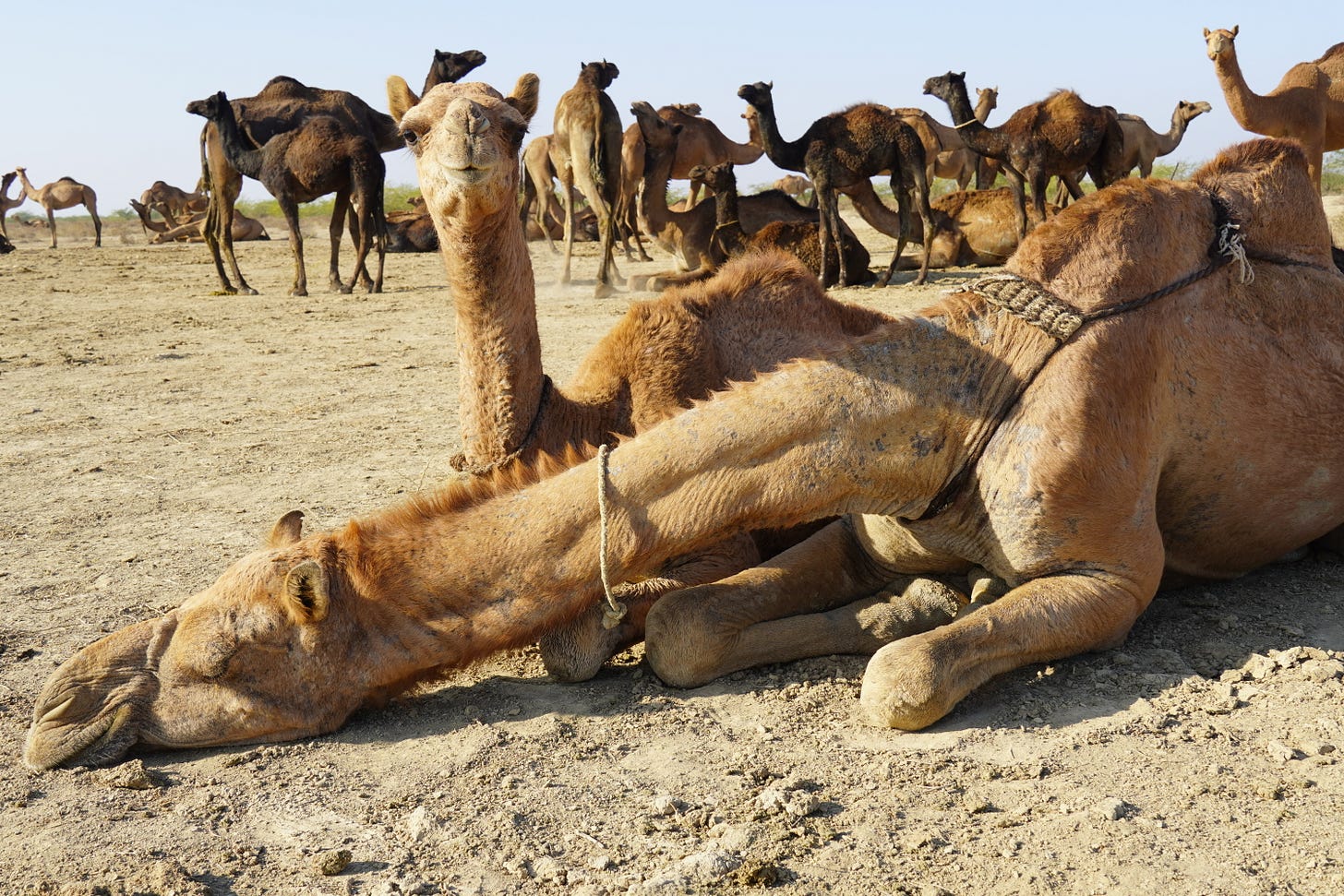

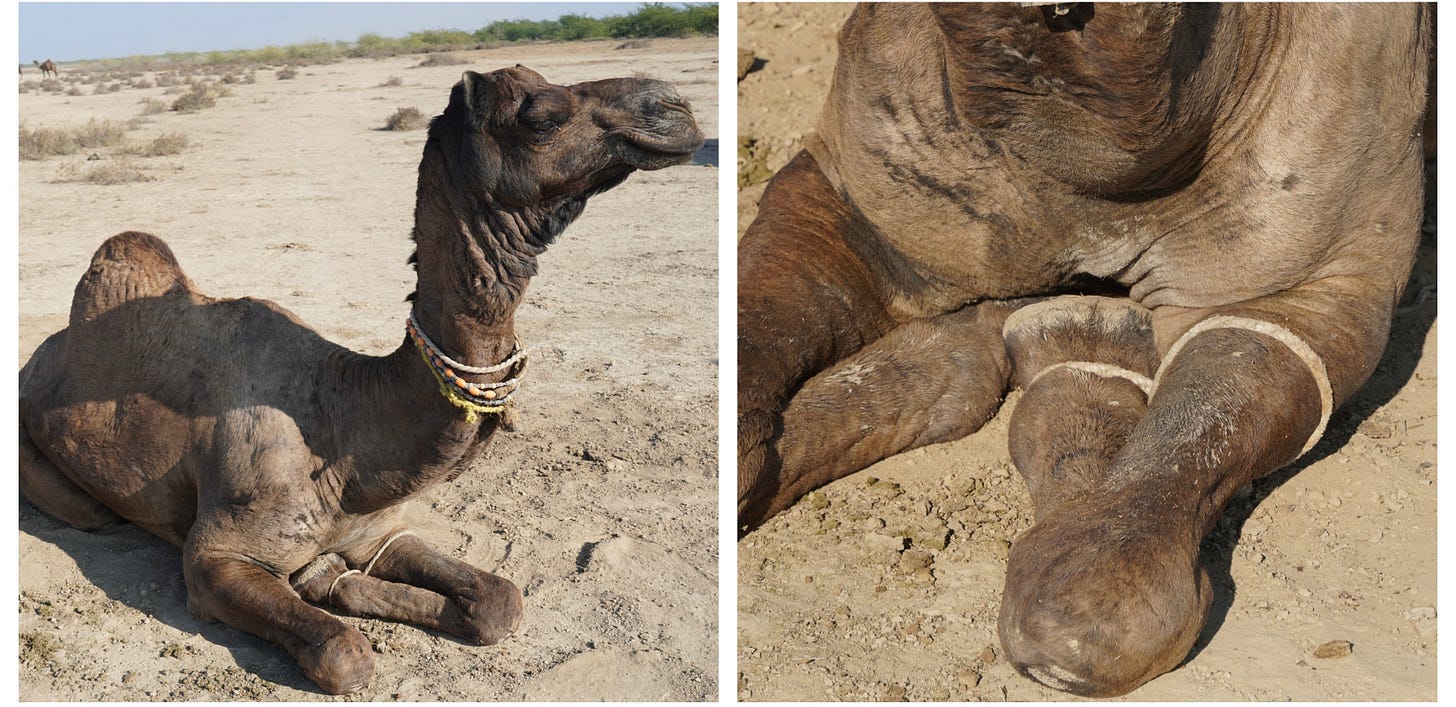
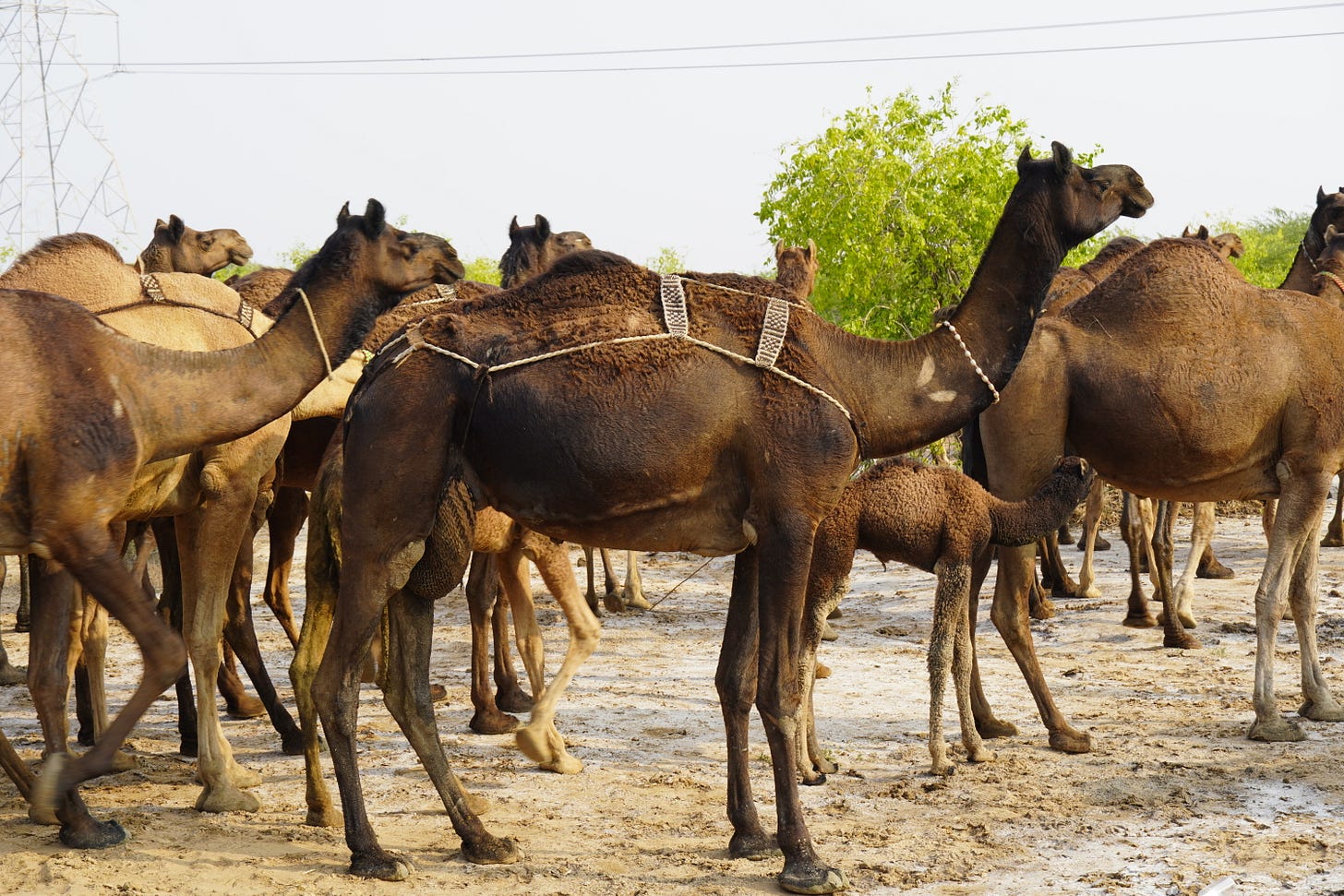

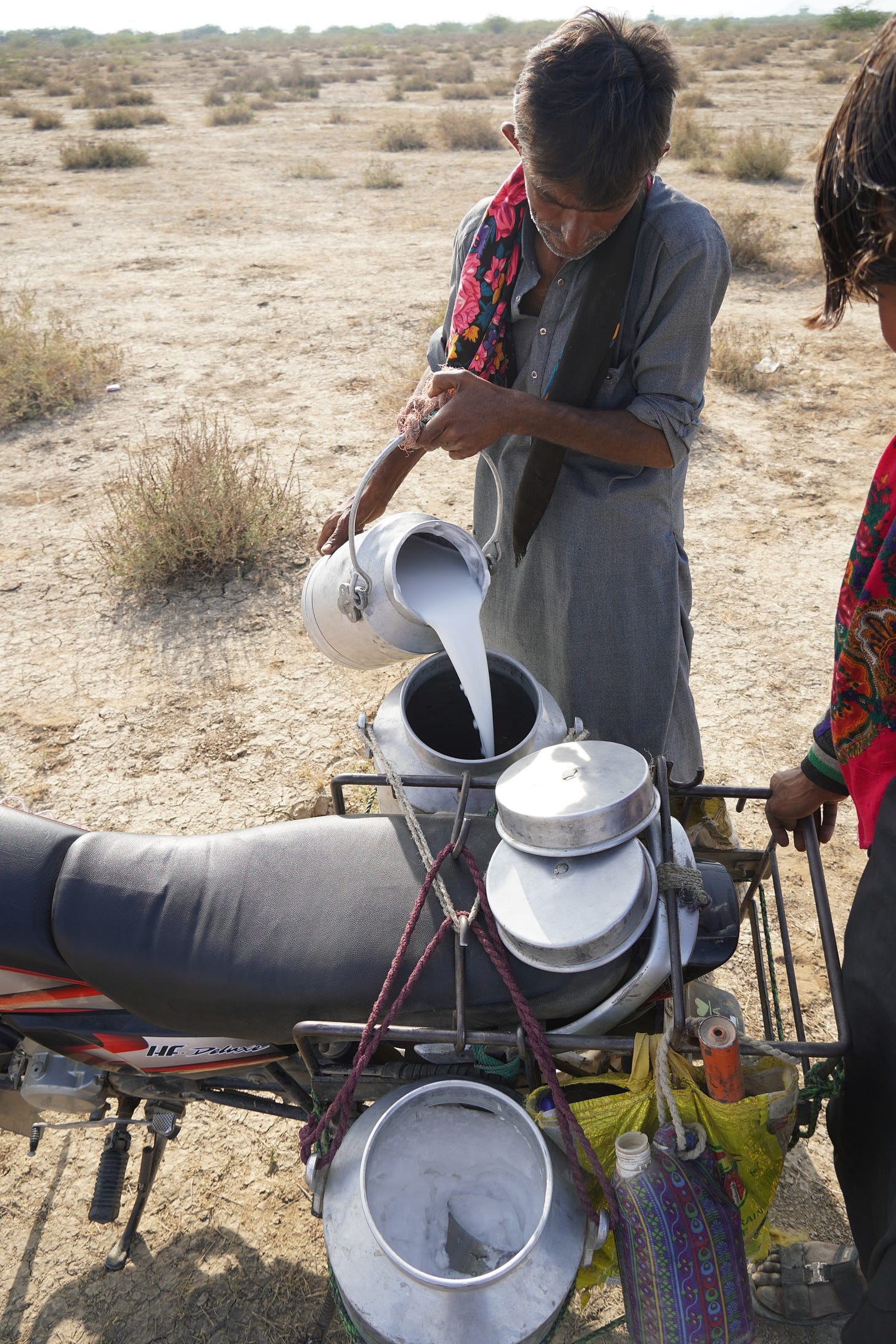

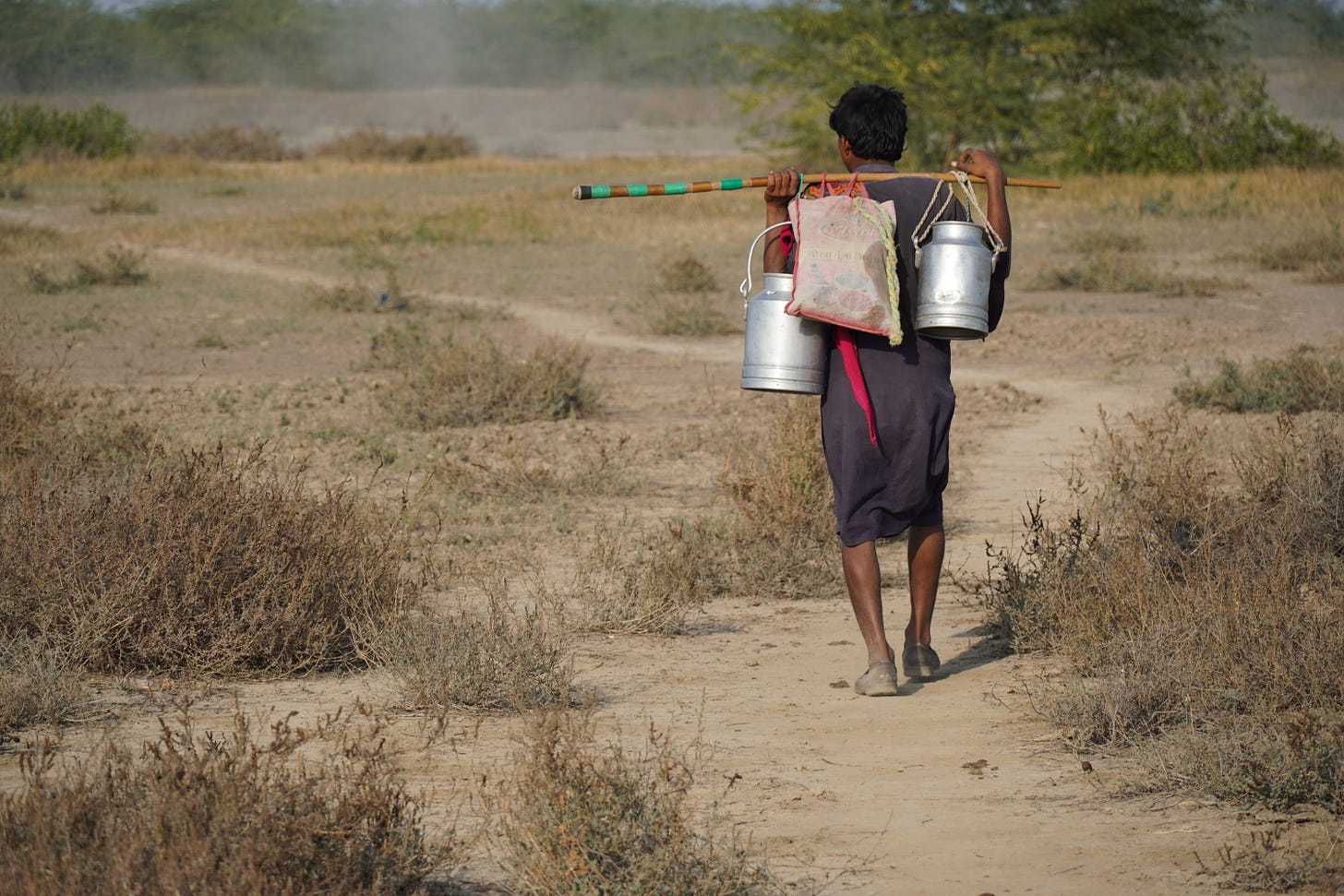
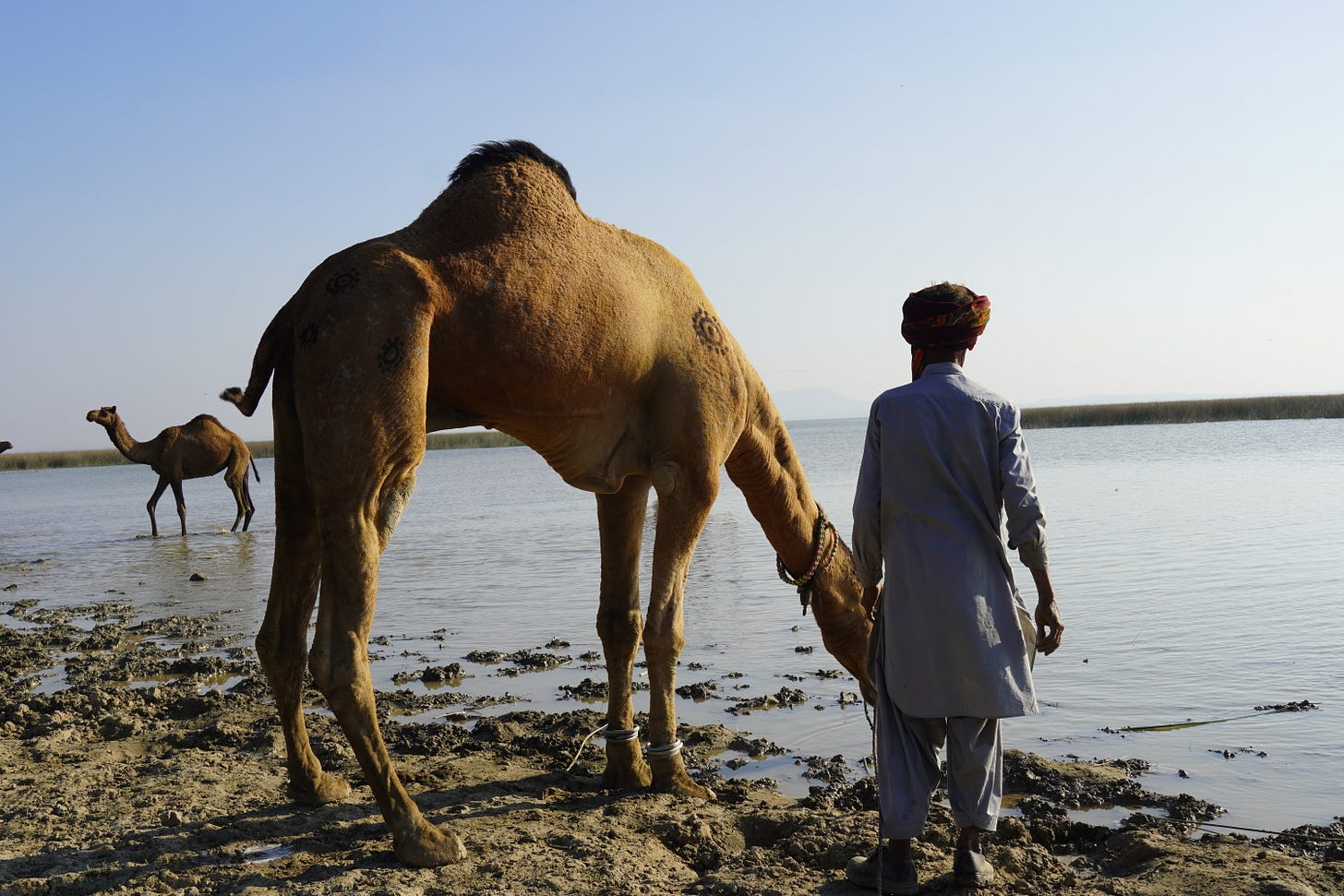


Every post gets better, Trevor. You're become a really excellent writer!
Absolutely love this amazing work. Inland Australia is likely to convert to various forms of pastoral nomadism in the future when trucks and roads and bore pumps fade into history.